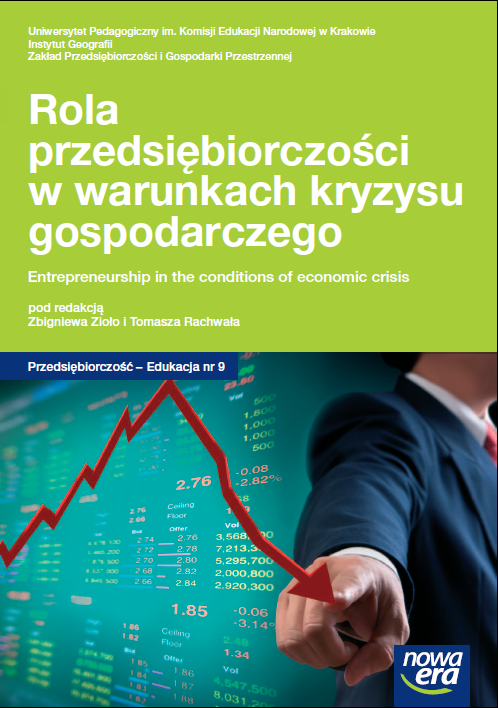The evolution of museums from their traditional form nto a narrative multimedia experience on the example of Oskar Schindler's Factory
DOI:
https://doi.org/10.24917/20833296.9.10Keywords:
tourism, museum, Oskar Schindler, Jew, CracowAbstract
Cracow is a tourism centre both on a regional and national scale; it welcomes several million tourists annually, and the number increases each year. In 2010, the number of visitors to Cracow exceeded 8 million. The city is very well prepared to receive vast numbers of tourists, both national and foreign, from the perspective of the development of tourist infrastructure. The gastronomy, accommodation and entertainment base, as well as the ever - growing conference and congress facilities, make Cracow a city that satisfies the needs of tourists of varied preferences and motivations. A vital question is also the price diversity when it comes to tourist services, which makes the city available also to visitors with lower incomes. Cracow is, furthermore, a great center of museums. Numerous monuments of magnificent historical and architectural value attract an immense number of tourists, and tourist routes that have been created in the city facilitate the visiting process. The goal of this article is to present Cracow’s Historical Museum - Schindler’s Factory. The article will describe the significance of the museum in the 21st century, as well as its promotional and informative activities. The results of a survey carried out on a group of one hundred visitors to the museum will also be presented. The goal of the survey was to learn what the main reasons for their visit were, as well as their opinions, on how the city promotes and encourages tourists to visit this particular museum.
References
Bartoszewski, A. (2010). Najnowsze osiągnięcia technologii informacyjnej a turystyka – nowe wyzwania i możliwości. W: K. Denek, A. Kamińska A. Kojs W: (red.), Edukacja jutra. Proces wychowania w szkole i poza nią. Poznań: Wydawnictwo Naukowe UE, 301-315.
Bednarek, M. (2004). Deutsche Emailwarenfabrik Oskara Schindlera w Krakowie w latach 1939-1945. W: M. Bednarek (red.), Krzysztofory, nr 22, 127-143.
Białek, M. (2005). Muzeum jako firma stosująca marketing. W: Turystyka i Hotelartswo, nr 8.
Bąk, J., Stach, P. (2001). Muzeum jako konkurujące przedsiębiorstwo – w poszukiwaniu dróg rozwoju. W: Zeszyt Naukowy WSDG. Warszawa: Wydawnictwo Naukowe WSDG, 8.
Chwalba, A. (2002). Dzieje Krakowa. Kraków w latach 1939–1945. Kraków: Wydawnictwo Naukowe PWN.
Kiedrowicz, G. (2009). Technologia informacyjna w turystyce i rekreacji. Radom: Wydawnictwo Naukowe Instytutu Technologii Eksploatacji – PIB.
Rottermund, A. (2001). Muzeum przyszłości. W: Spotkania z muzeami. Dwieście lat muzeów w Polsce, Warszawa: Spotkanie z zabytkami.
Stasiak, A. (2007). O potrzebie rewolucji w polskim muzealnictwie XXI wieku. W: A. Stasiak (red.), Kultura i turystyka razem czy oddzielnie. Łódź: Wydawnictwo WSTH, 115-134.
Stasiak, A. (2006). Muzea wobec wyzwań współczesnej turystyki. W: A. Toczewski (red.), Rola muzeów w turystyce i krajoznawstwie, Zielona Góra: Wydawnictwo Naukowe UZ, 67-74.
Zdon-Korzeniowska, M., Rachwał, T. (2011). Turystyka w warunkach światowego kryzysu gospodarczego. Prace Komisji Geografii Przemysłu Polskiego Towarzystwa Geograficznego, 18, 116-128.
Ruch turystyczny w Krakowie w 2011 roku – raport końcowy pod kierunkiem K. Borkowskiego
Downloads
Published
How to Cite
Issue
Section
License
Articles are published under the terms of the Creative Commons License (CC BY-ND 4.0; Attribution– NoDerivs).

